Rodrigo Varella Tambara
Adaptive Control Applied to Power Electronics
Federal University of Santa Maria
Santa Maria
Rodrigo Varella Tambara received the B.S., M.Sc. and Ph.D. degree in electrical engineering from the Federal University of Santa Maria, Santa Maria, Brazil, in 2008, 2010 and 2014, respectively. From 2014 to 2016 he was Adjunct Professor at the Universidade Franciscana (UFN), Santa Maria, Brazil. From 2016 to 2018 he was Adjunct Professor at the Federal University of Santa Maria, Cachoeira do Sul, Brazil. Currently, he is at Federal University of Santa Maria, where he is a Adjunct Professor at the Colégio Técnico Industrial de Santa Maria and a Researcher in Power Electronics and Control Group (GEPOC) since 2004 and Electrical and Computational Systems Research and Development Group (GSEC) since 2015. His research interests include adaptive control, grid-connected converters, static converters, biomedical engineering, dimming systems and LED drivers. He is currently a permanent faculty member of the Graduate Program in Electrical Engineering at UFSM (PPGEE), where he supervises master’s and doctoral students. Dr. Tambara is member of the Brazilian Power Electronics Society and member of Brazilian Automatic Control Society. Dr. Tambara is a reviewer of the Brazilian Power Electronics Society, Brazilian Automatic Control Society, IEEE and IET magazines.
The short course “Adaptive Control Applied to Power Electronics” aims to help undergraduate students, professors, researchers and technology professionals to develop practical skills in the design and implementation of adaptive techniques in digital control systems applied to power static converters. Parameters estimation and adaptive gains techniques are presented, using both the state-space approach, such as the input-output approach. Some problems are presented using Matlab and PSIM so that, through of these programs, the professional will be able to better understand the implementation of the adaptive algorithms. In addition to the algorithms, an APP, developed in Matlab, is available for the designer to develop projects and quick tests of adaptive controllers. The tutorial has been developed such as to be useful to both beginners to the most advanced in adaptive control. The theory presented in this tutorial can be used in the control of: machines electrical equipment, DC-DC and DC-AC static converters, robotic systems, power generation systems, among others.
The tutorial is organized as follows:
Section I: Math review of adaptive control;
Section II: Parameters estimation techinques;
Section III: Model Reference Adaptive Control (MRAC);
Section IV: Introduction to stability analysis for adaptive control;
Section V: Technical details about design and implementation of adaptive control in discrete time;
Section VI: Applications of adaptive control in power electronics;
Section VII: APP for the design and simulation of MRAC controllers.
Main Guidebook for the short course: TAMBARA, Rodrigo Varella. Controle Adaptativo: Teoria e Aplicação. Santa Maria: Editora UFSM, 2024.
Link: https://editoraufsm.com.br/controle-adaptativo-ebook.html

SIGURD SKOGESTAD
How can you control a complex process effectively using simple elements with a minimal amount of modelling? How can you put optimization into the control layer?
Norwegian University of Science and Technology,
Trondheim, Norway
Sigurd Skogestad is a Professor of Chemical Engineering at the Norwegian University of Science and Technology (NTNU), where he has been a central figure in process systems engineering for over three decades. Internationally recognized as one of the foremost experts in process control, Professor Skogestad’s research focuses on plantwide control, self-optimizing control, model predictive control (MPC), and separation processes. His pioneering contributions to the development of control structures and operational strategies for complex chemical processes have had a major impact on both academic research and industrial practice.
He holds a PhD from the California Institute of Technology (Caltech), and has authored over 300 scientific papers and the widely cited textbook Multivariable Feedback Control: Analysis and Design. With an h-index above 75 and more than 25,000 citations, his work is considered foundational in control engineering. He has supervised over 60 PhD students and actively collaborates with both academic institutions and industry, especially within the oil and gas sector and sustainable process design.
Professor Skogestad has received several prestigious awards, including the Nordic Process Control Award and the IFAC Award for Excellence in Process Control. He is a member of the Norwegian Academy of Technological Sciences and frequently serves as a keynote speaker at international conferences.
How can you control a complex process effectively using simple elements with a minimal amount of modelling? How can you put optimization into the control layer?
Industry has been using simple and effective “advanced regulatory control” (ARC) schemes for almost 100 years, yet they remain poorly understood and therefore underused. The objective of the workshop is to provide a systematic approach for designing such control systems. The target audience includes both practicing control engineers as well as PhD students and teachers from academia.
The workshop explores the standard advanced control elements commonly used in industry for designing advanced control systems. These elements include cascade, ratio, feedforward, decoupling, selectors, split range, and more, collectively referred to as “advanced regulatory control” (ARC). Numerous examples are provided, with a particular focus on process control. I emphasize the shortcomings of model-based optimization methods, such as model predictive control (MPC), and challenge the view that MPC can solve all control problems, while ARC solutions are outdated, ad-hoc and difficult to understand. On the contrary, decomposing the control systems into simple ARC elements is very powerful and allows for designing control systems for complex processes with only limited information. With the knowledge of the control elements presented in the workshop, participants should be able to understand most industrial ARC solutions (which can be a challenge!) and propose alternatives and improvements.

EDEMAR DE OLIVEIRA PRADO
Dynamic Wireless Charging in Electric Vehicles: Technologies, Challenges, and Perspectives
Institut VEDECOM
Versailles, France
Edemar de Oliveira Prado earned a bachelor’s degree in Electrical Engineering in 2018. He completed his master’s degree in Electrical Engineering at the Federal University of Santa Maria (UFSM) in 2020. He completed his Ph.D. in Electrical Engineering at UFSM in 2024, focusing on the integration of renewable energy sources into double-conversion UPSs. Currently, he is finishing a Ph.D. in Electrical Engineering at the Federal University of Bahia (UFBA), where he is involved in the evaluation of modulation techniques, thermal design, and converter optimization. He has participated in 11 research and development (RD) projects in collaboration with Brazilian companies (2018-2025). From 2023 to 2024, he completed a sandwich Ph.D. in France, collaborating with the Gustave Eiffel University and the VEDECOM Institute, where his research was focused on the design, modeling, and control of dynamic wireless power transfer systems for electric vehicles. Currently, he is also finishing a post-doctorate in wireless power transfer systems for electric vehicle technologies, and is a Research and Development Engineer at the VEDECOM Institute.
Dynamic Wireless Charging in Electric Vehicles: Technologies, Challenges, and Perspectives
Dynamic Wireless Power Transfer (DWPT) systems enable electric vehicles to receive power while in motion, offering a promising solution to extend the vehicle’s range and reduce the size of the battery. Despite their potential, inductive DWPT systems involve non-linear dynamics, coil misalignment, and time-varying inductances, making their design and control challenging and often misunderstood. The objective of this workshop is to provide a structured approach for modeling and controlling such systems, bridging the gap between theory, simulation, and real-world deployment. The target audience includes practicing power electronics and control engineers, as well as PhD students and academic researchers in the field of electric mobility. The workshop introduces the fundamental architecture of DWPT systems, including the primary coils embedded in the roadway, their power electronics interfaces, and the secondary system onboard the vehicle. The emphasis is placed on nonlinear state-space modeling techniques, MATLAB models for efficient simulation, and experimental validation. Extremum-seeking algorithms for maximum power transfer and resonance tracking are discussed, as well as coil sequencing techniques that operate without dedicated sensors. Illustrative case studies and experimental results are presented, including a 30-kW DWPT demonstrator achieving over 90% efficiency during real vehicle charging, including a Stellantis DS3 and a Renault ZOE. The insights acquired through the workshop will enable participants to comprehend and simulate inductive DWPT systems, evaluate sequencing techniques, and design solutions that balance theoretical and practical implementation.



